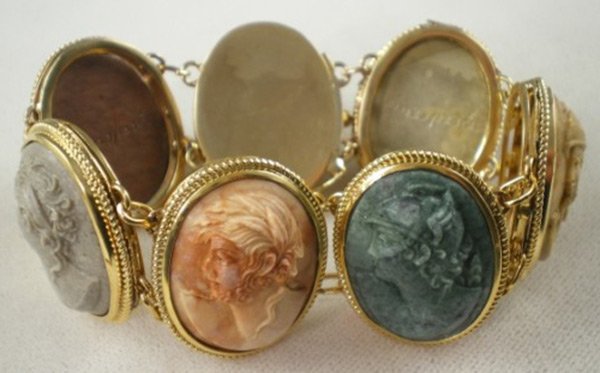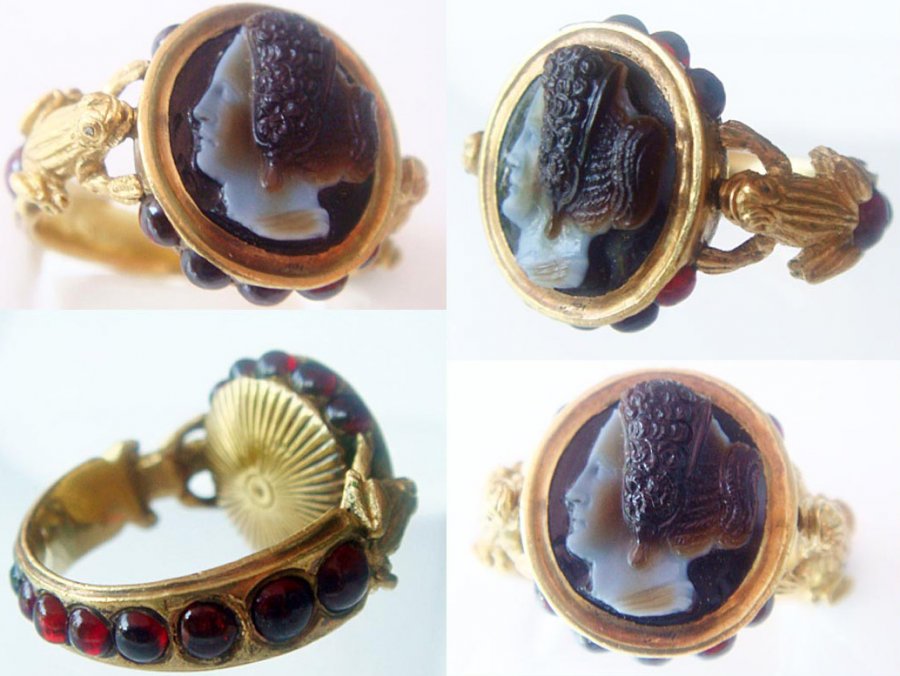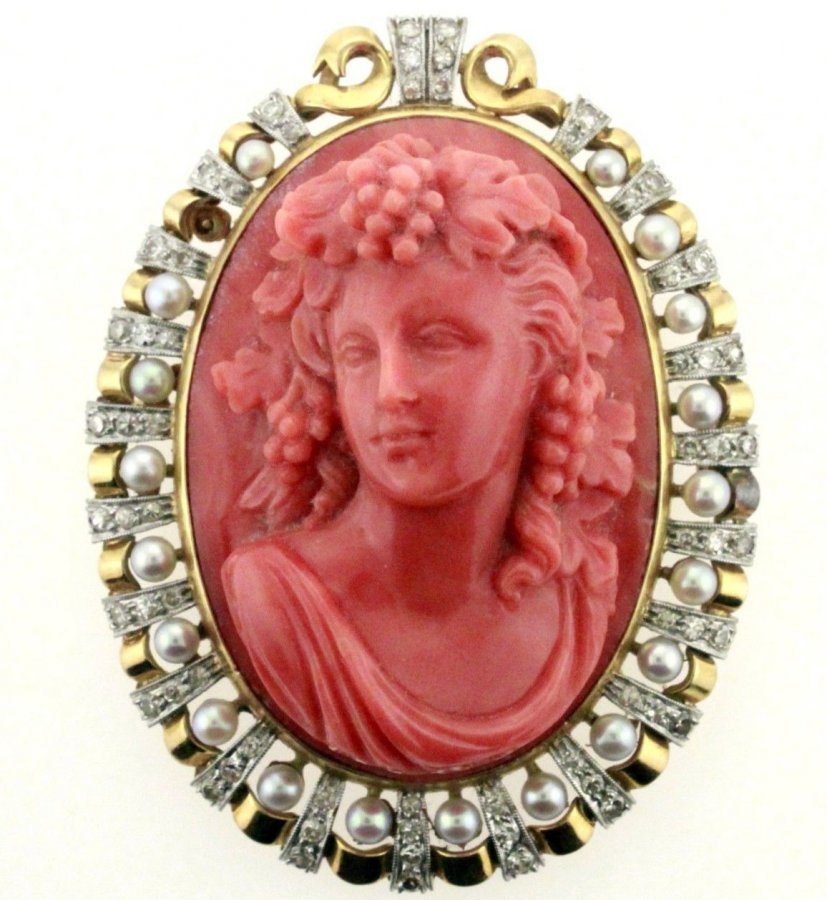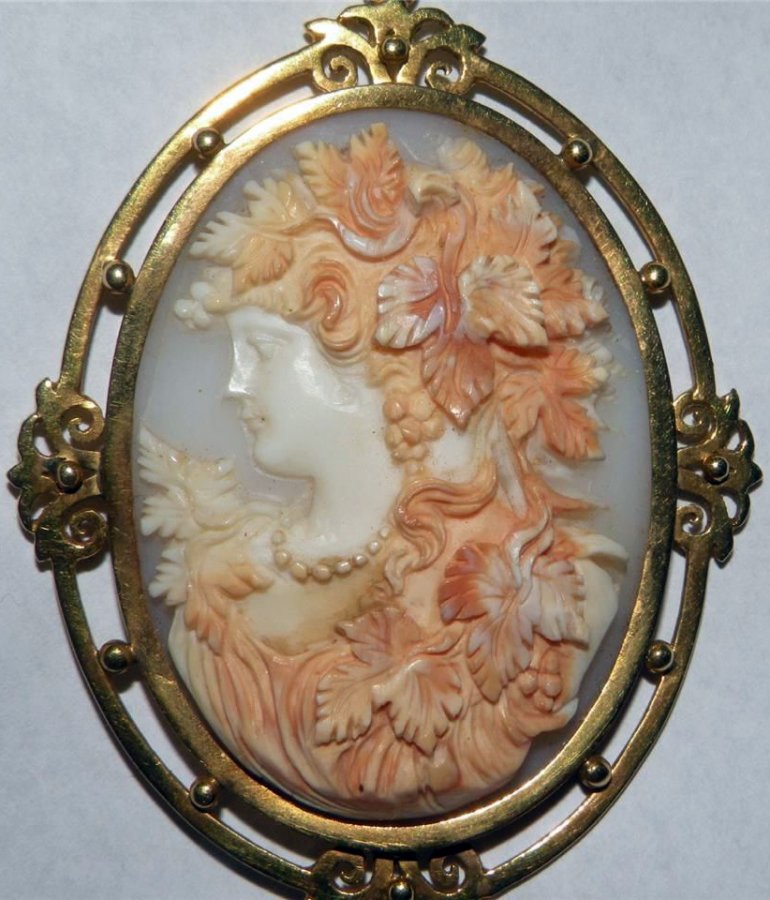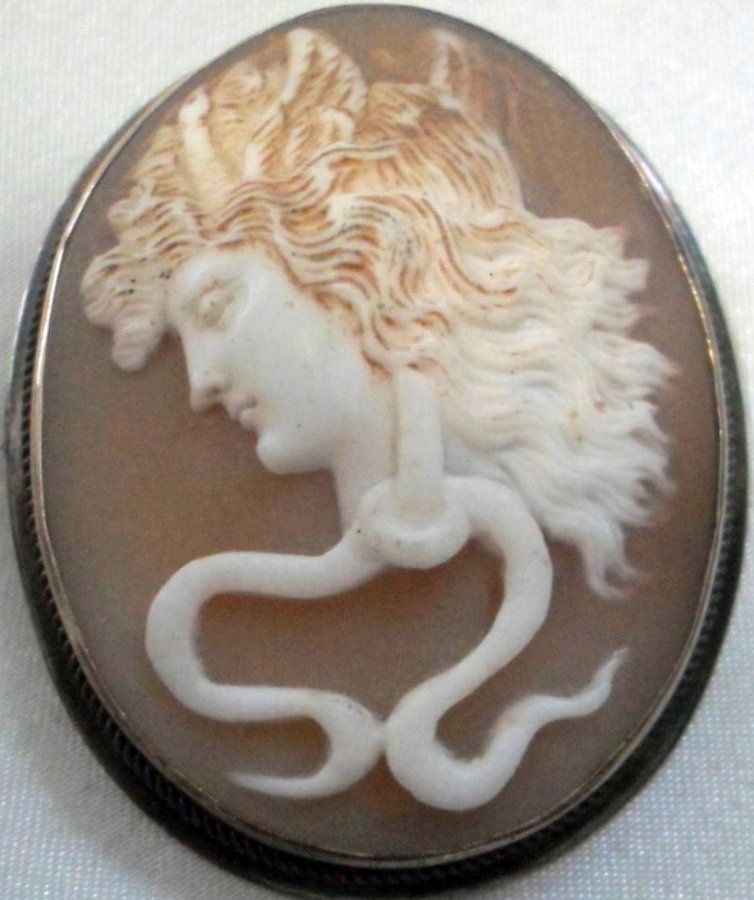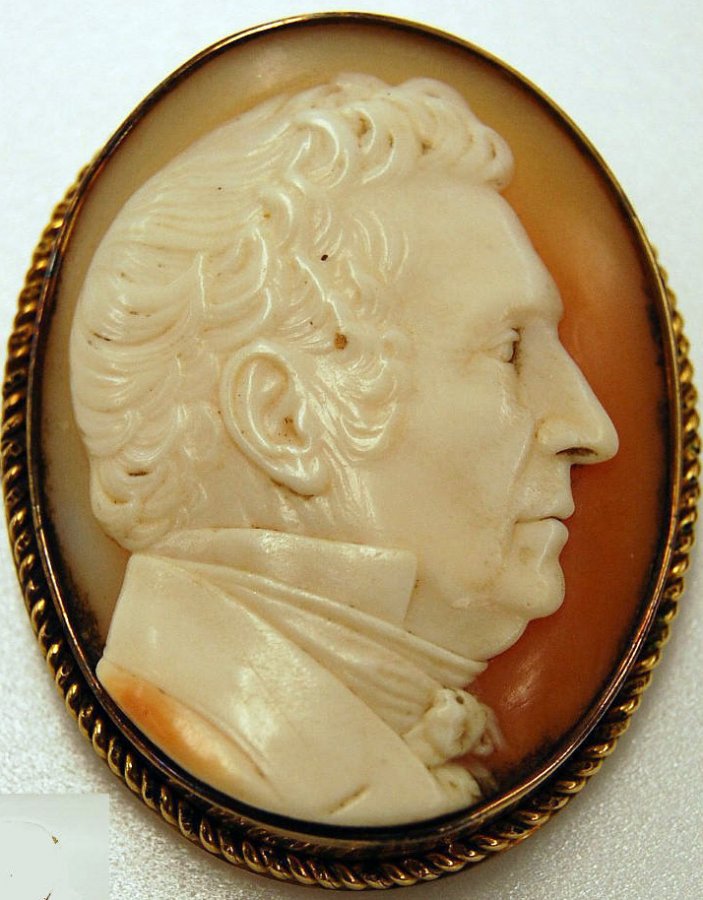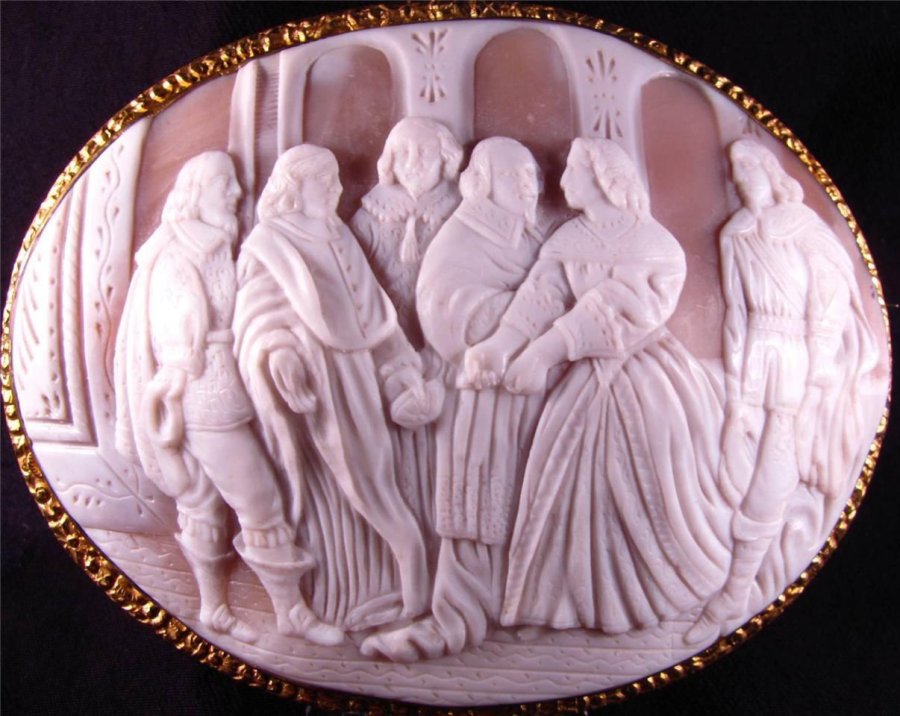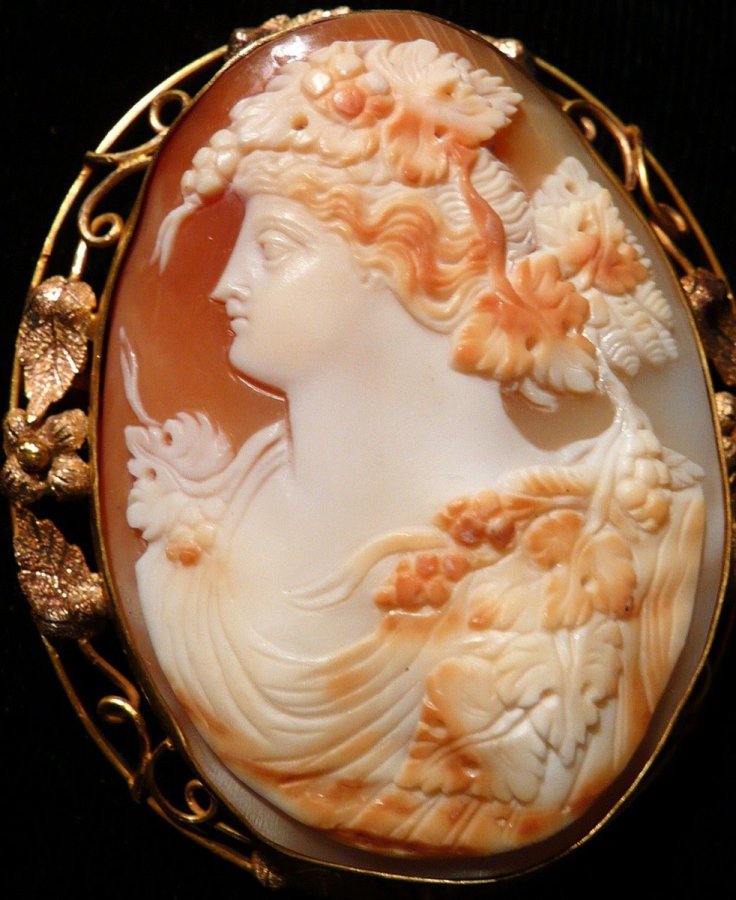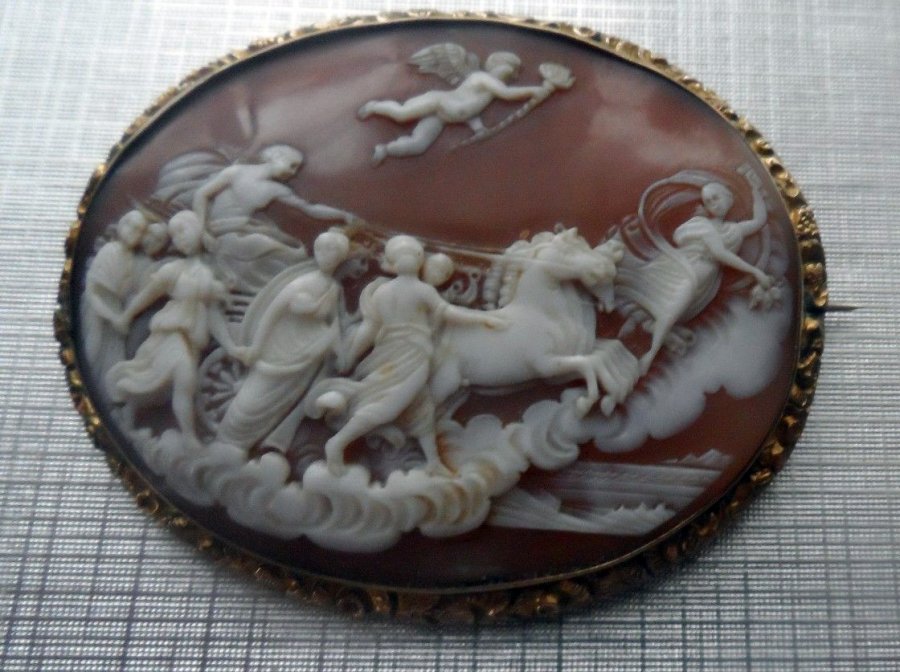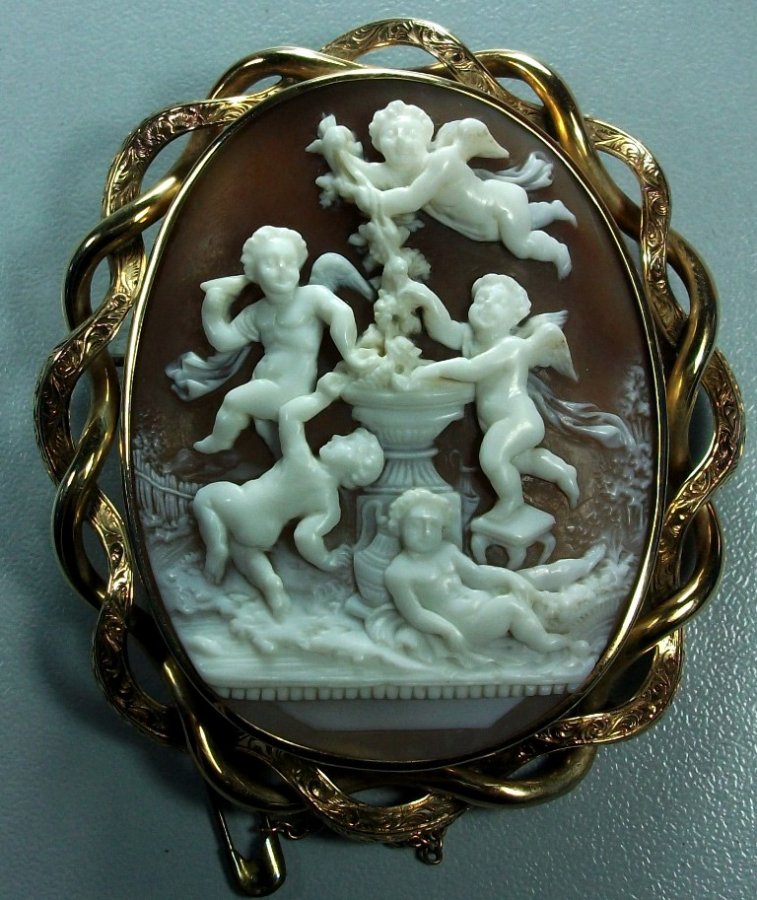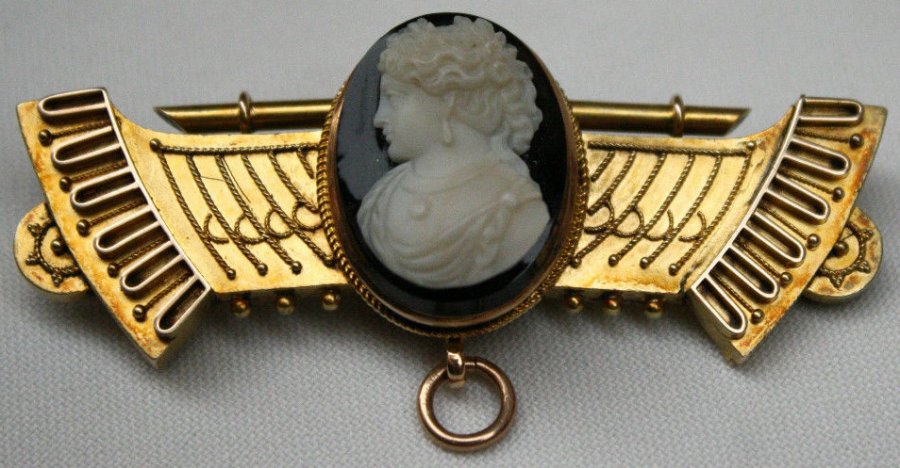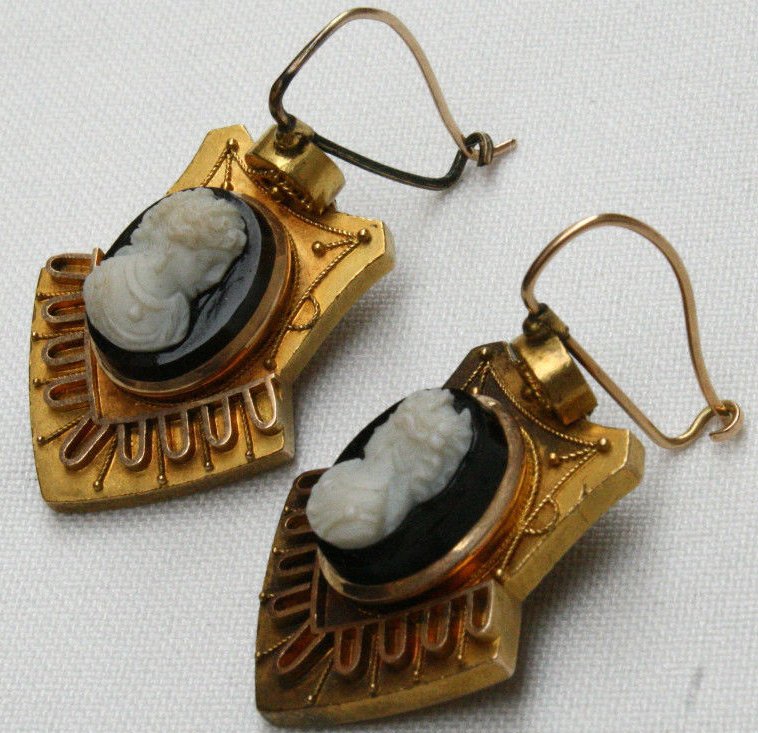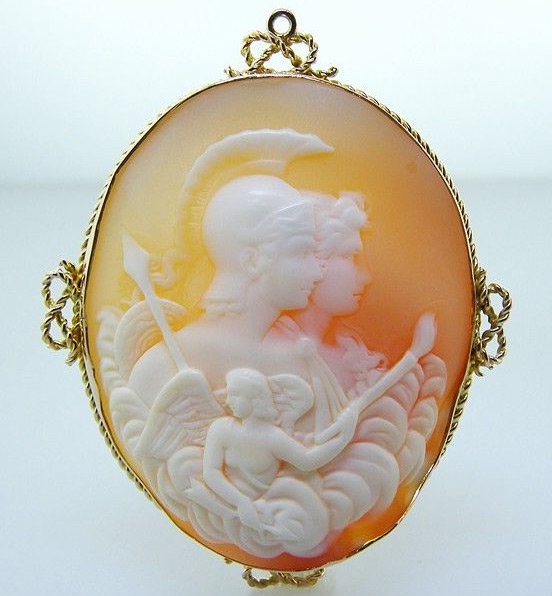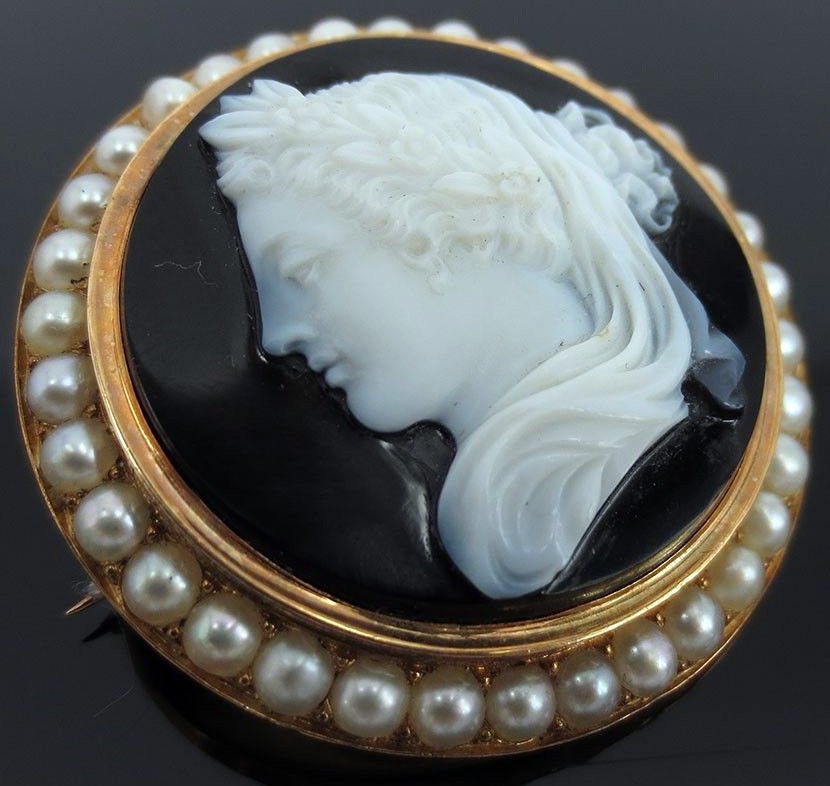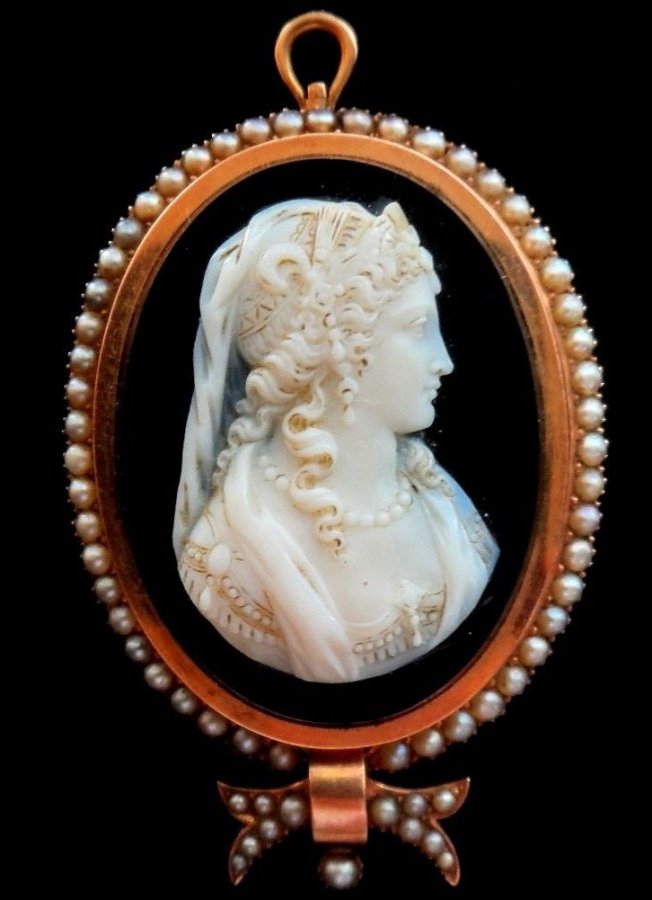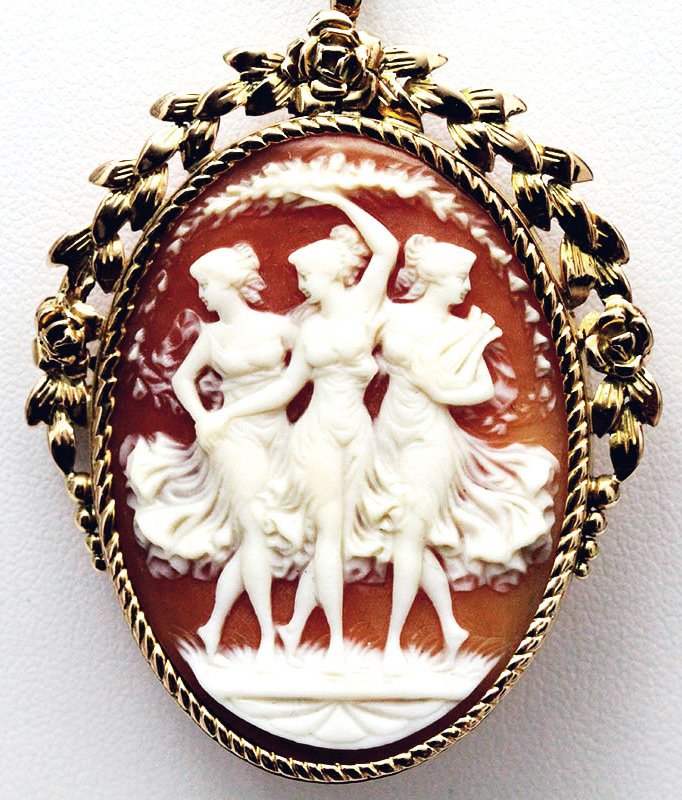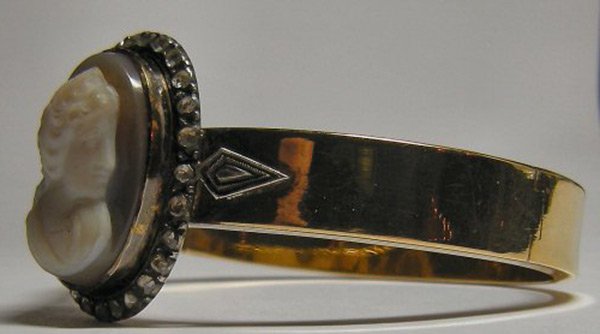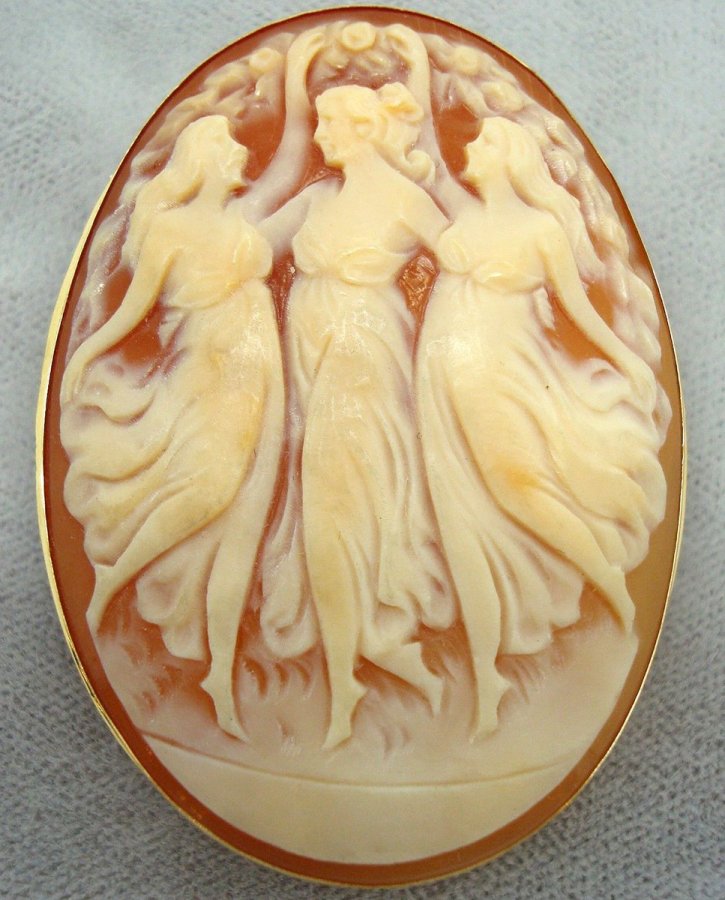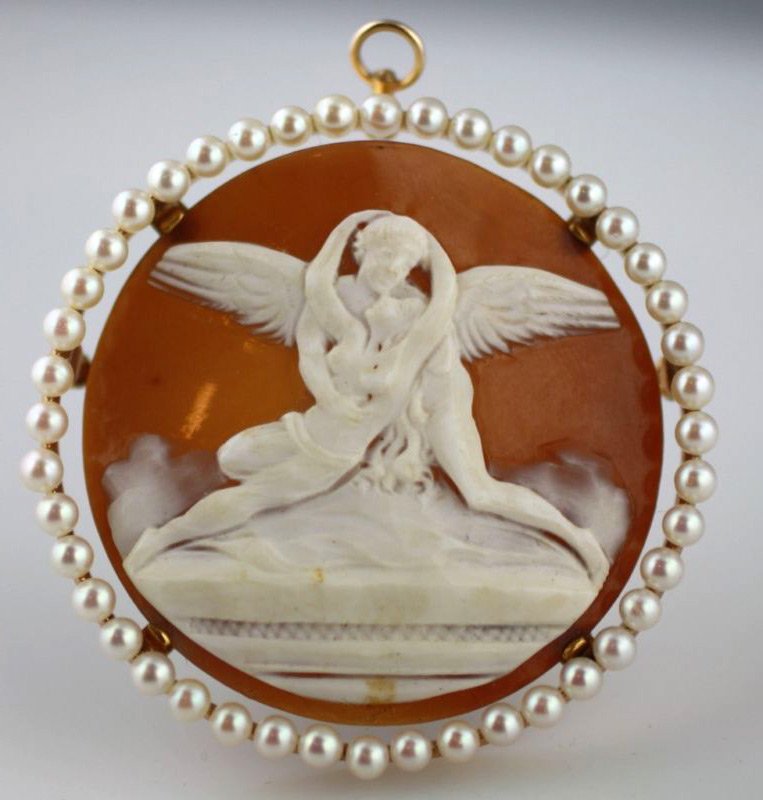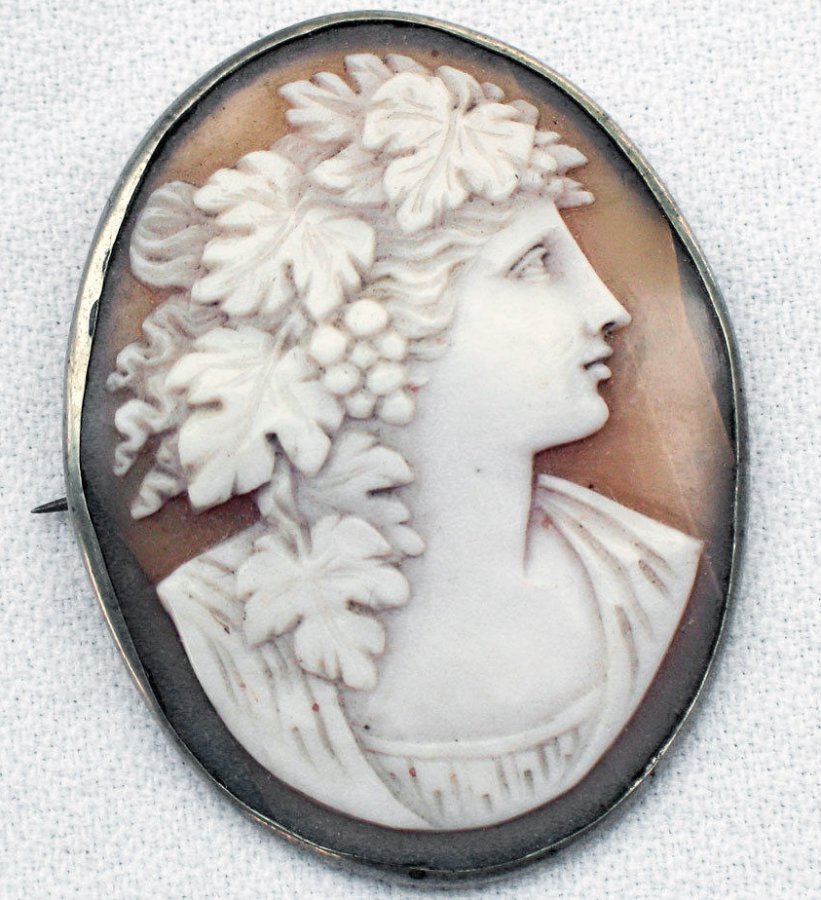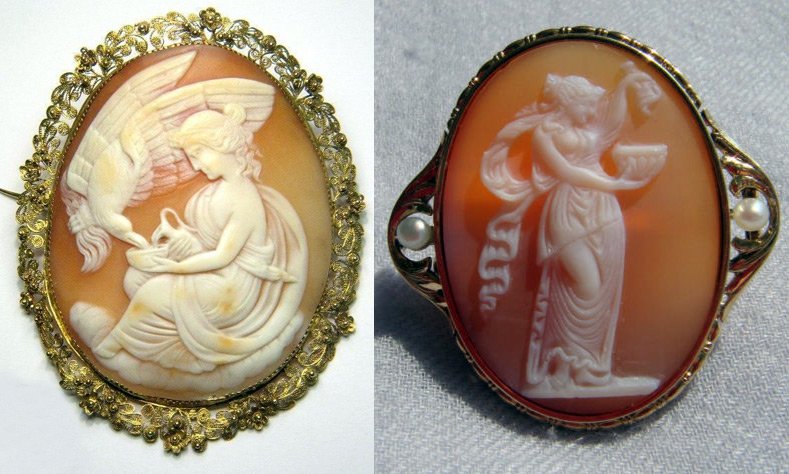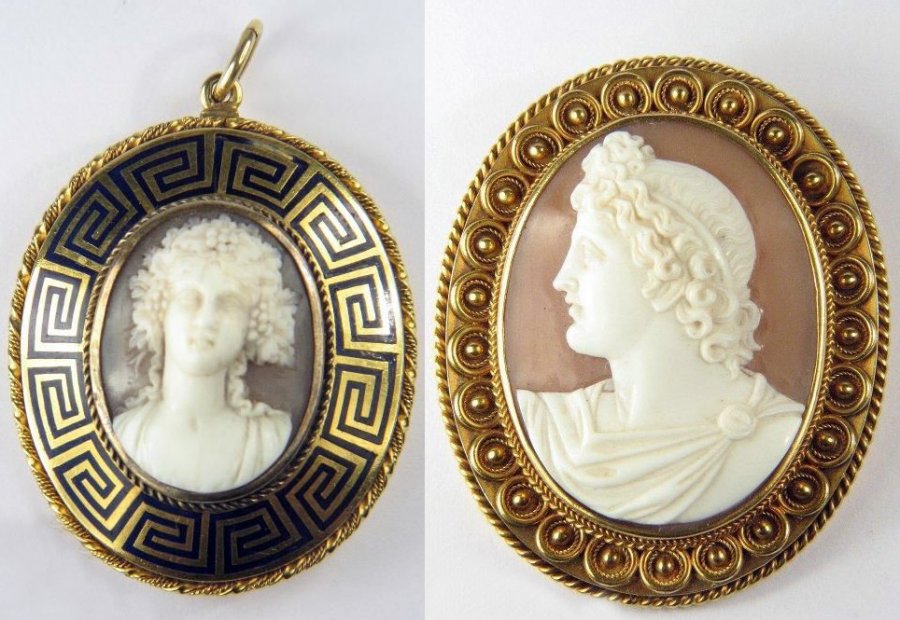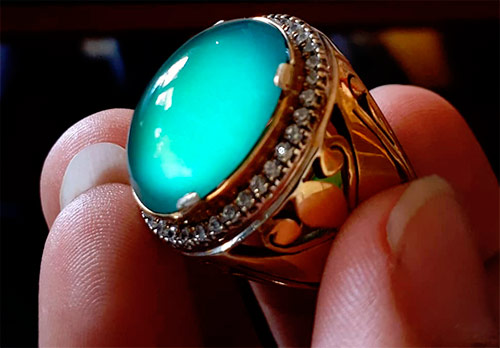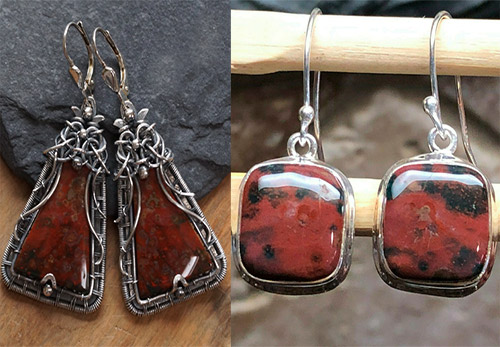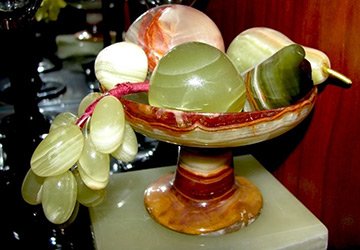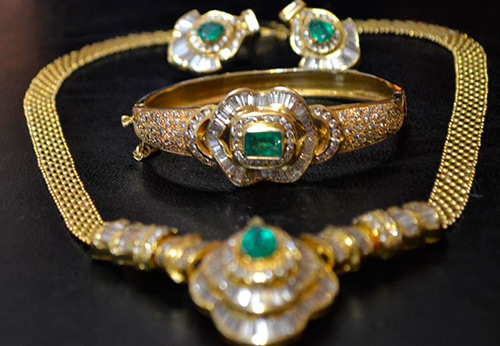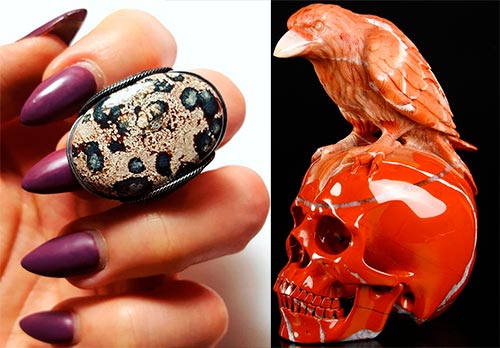Jewelry
Cameo and its history
The cameo is a symbol of exquisite beauty. This is a work of art, in which subtle grace, refinement of forms, beauty and perfection.
Cameos are ancient works of art that embody the ideal of the harmonious and beautiful created by man.
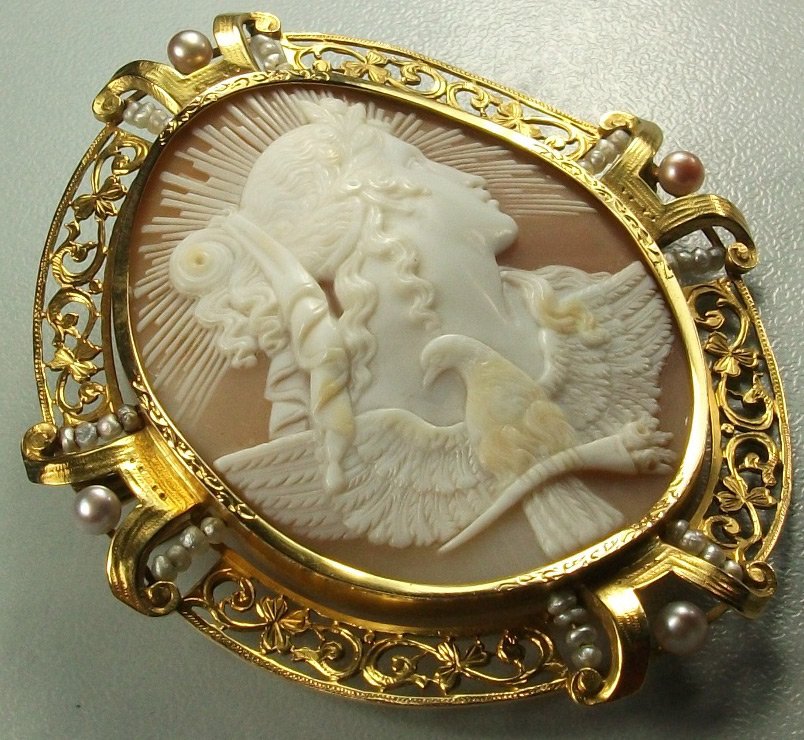
To tell the story of the cameo, let's define some of the terms we might need in our descriptions.
Glyptics - the art of stone carving.
Gemma - these are cameos and intaglios.
Cameos - carved stones with images in relief.
Intaglio - stones or gems with an in-depth image. From ancient times they served as seals.
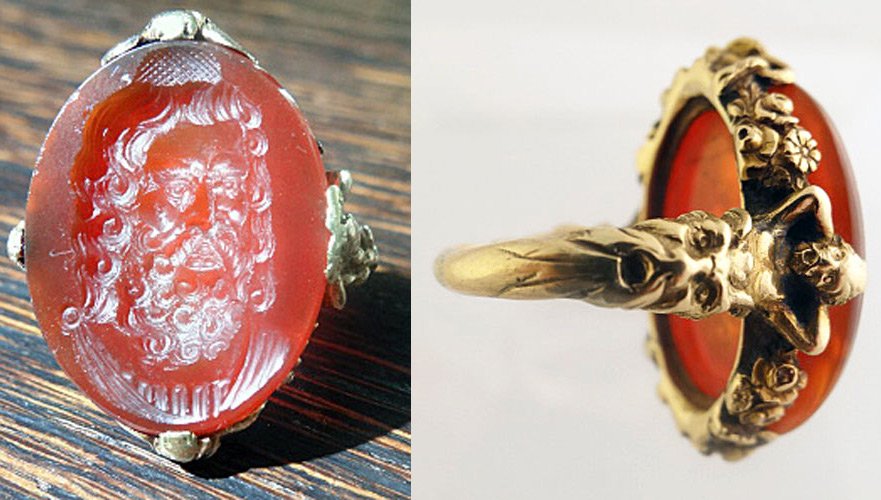
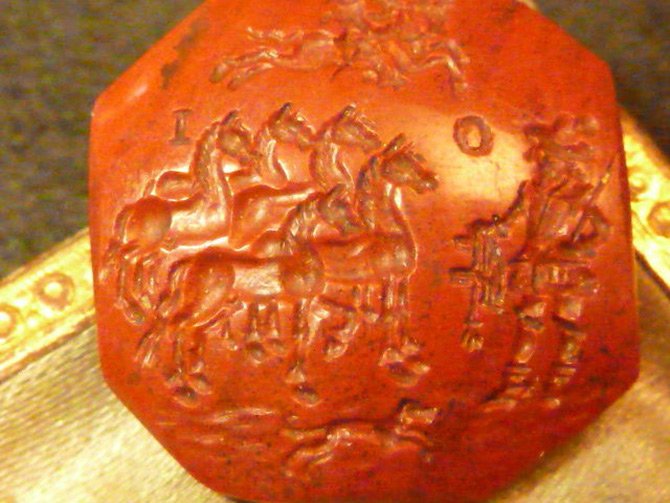
Already in the IV century BC. glyptic masters carved lions, sphinxes, scarab beetles in relief. But they were mostly monochrome cameos. At the beginning of the 3rd century BC. NS. multi-colored gems appear. For their execution, a multilayer stone was used - agate. The multi-layer, that is, the polychrome of the stones, allowed the craftsmen, using different colors of the layers, to achieve effects of extraordinary color and picturesqueness. Multi-layered agate emphasized the play of different tones and their shades, and by changing the thickness of, for example, a white layer of agate so that a dark lower layer was visible through it, it was possible to achieve different shades. The ancient masters used Indian sardonyx, which was a combination of white, yellow with reddish and even brown shades, and Arabic, which was dominated by blue-black and bluish shades.
Where do cameos come from? - From Alexandria. The city that was founded in 322 BC. NS. Alexander the Great. It was here, at the mouth of the Nile River, that the skillful hands of Greek craftsmen made the great masterpieces of glyptics - a cameo with portraits of Ptolemy II and Arsinoe, the famous "Farnese cup", "Ptolemy's cup" and many others.
And after the campaigns of Alexander the Great, new, diverse in color and brightness, minerals began to be used in the manufacture of gems. Intaglio was more often used as a seal, and cameos became a luxury item. They were inserted into rings, diadems, crowns, adorned the clothes of kings, priests and nobles. Furniture, musical instruments, caskets and other expensive utensils began to be decorated with expensive oriental minerals. The products that have survived to this day, created by masters on the orders of the mighty of this world, amaze with their beauty and delicate artistic taste.
In ancient art, glyptic masters were held in high esteem. Many kings of Hellas had their own court stone carvers. Many of the nobility collected carved stones. For example, King Mithridates Eupator had a huge collection that was very famous.
Carving cameos is not an easy task, it required not only patience and great skill, but also the ability to see the pristine beauty in the stone, which only a brilliant master can reproduce. How great the labor of carving cameos can be explained. After all, the master worked and created images almost blindly, since many stones, such as agate, are hard enough, harder than metal - and to cut them, you need not a metal cutter, but abrasives, for example, "Naxos stone", corundum powder, diamond dust. And when the master was grinding the image, the abrasive powder mixed with water and oil covered the drawing.
It took years of continuous work to make one cameo. And besides this, it was necessary to predict in advance, to see through the thickness of the mineral how its layers alternate, because they do not just run in parallel, they bend, do not coincide, change the thickness - all this can destroy the conceived image. Therefore, a person could do this with a selfless love for beauty, with virtuoso skill. And the image was born slowly.However, the carvers were able to reproduce many antique paintings in stone - they turned out to be a kind of miniature painting gallery. Some of the cameos are copies of paintings by great painters that have been lost forever. The strength of the stone ensured the durability of the lost. Gone are the masterpieces of architecture, sculptures, the paintings of ancient painters have disappeared without a trace, and the ancient gems silently keep the beauty and secrets of bygone times.
The best collections of cameos can be considered the collections of the Hermitage, Vienna, Paris.
The first gems in Russia began to be collected by Catherine II, who was seriously keen on this occupation. And once in a letter to one of the French enlighteners, she writes: “My small collection of carved stones is such that yesterday four people barely carried two baskets with boxes, which contained barely half of the meeting; in order to avoid misunderstanding, know that these were the baskets in which we carry firewood in winter. " Access to the collection was limited, and not many people could see it. During the reign of Catherine II, up to 10,000 gems were collected.
Then the collection of the Hermitage continued to grow from the collections of the Russian nobility until 1917. And now the collection is growing. Not only archaeological expeditions contribute to this, but famous collections of gems from scientists-mineralogists are also transmitted. For example, the collection of the famous Soviet mineralogist G.G. Lemleina added more than 260 ancient gems to the Hermitage in 1964. It should be noted separately the world-famous cameo in the Hermitage collection, the Gonzago cameo, which appeared in Russia in 1814. The cameo was presented to Alexander I by Josephine Beauharnais, Napoleon's ex-wife. In 1542, the name of the owner of this cameo was first mentioned - the Duke of Mantua Gonzago. After the defeat of Mantua by Austria, the cameo began to travel. For four hundred years, it has changed its owners seven times. Now she is in the Hermitage.
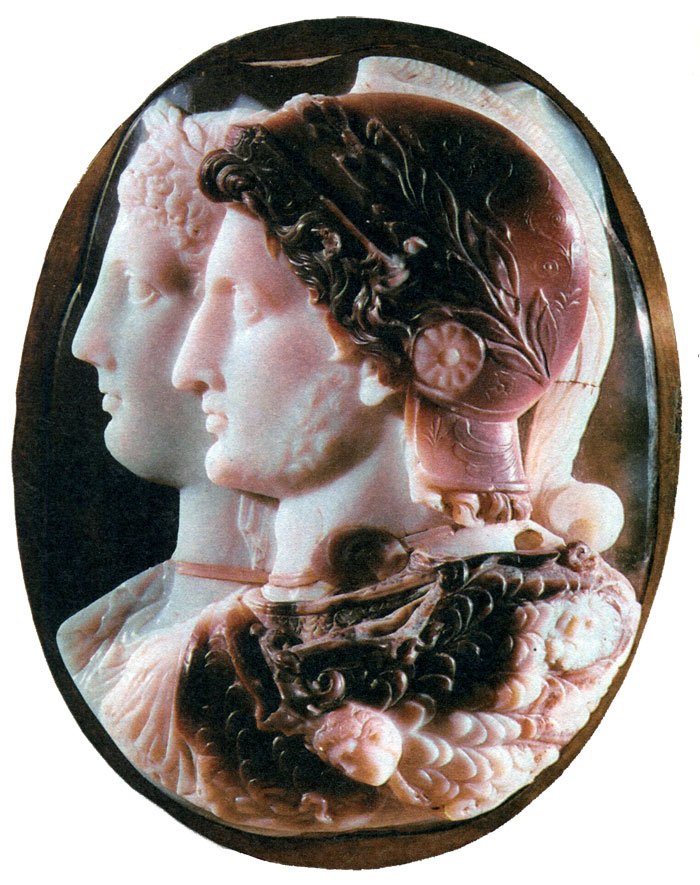
The cameo was created by an unknown artist in the 3rd century. BC. in Alexandria. It depicts monarchs of Hellenistic Egypt Ptolemy II and his wife Arsinoe. Portraying Ptolemy, the master emphasized his resemblance to Alexander the Great. On his shoulder the aegis of Zeus, the monarch's helmet clearly repeats the helmet of the god Ares. On the heads of the rulers, laurel wreaths as a symbol of deification. The Gonzago Cameo is a fine example of stone painting. The master superbly and masterfully used all the layers of the stone. The profile of Ptolemy II seems to be highlighted with a bright light, while the profile of Arsinoe is visible in the shade of a bluish tint. In the uppermost brown layer, a helmet, hair, aegis are carved, and lighter blotches in this layer are used to create the heads of Medusa and Phobos that adorn the aegis. And that is not all. By changing the polish, the master gives the stone either bodily warmth or metallic sheen.
Many antique cameos are distinguished by sophistication and sophistication; mythological subjects can often be found on them. The extraordinary skill of the carvers is striking - their ability to depict complex multi-figured compositions, find the desired pattern rhythm and give dynamism to miniature scenes. In addition to monarchs, copies of paintings by painters and mythological plots, the heroic themes and pathos of images are captured in cameos. The Goddess of Victory is a favorite glyptic character.
The culture of Ancient Greece was also adopted by Rome. With the fall of the kingdom of the Ptolemies (30 BC) - the last power of Hellenism, many Greek masters gave their talent to the Julian-Claudian dynasty. A new style is born. Already preferred two-tone reliefs - white silhouettes against a dark background. The glyptics are becoming drier, more graphic and planar.
Epochs change, attitudes towards beauty change, sometimes cameos begin to remake, as if reinterpreting plots, subordinating them to the spirit of the times.
Cameos are not only beautiful works of art, but also a rich source of information about the material and spiritual culture of bygone times.The ancient world reached the highest peaks in the field of art, therefore, in subsequent eras, especially in the field of glyptics, many masters remained in the grip of this beauty and perfection, and their gems are imitations or copies of those that embodied the ideal of painting in stone.
What cameos are in our modern world? Is there a place for them among the decorations?
Of course there is. And recently cameos have become especially popular. Today, as in the Victorian era, cameos are adorned with brooches, pendants, hairpins, and signet rings. Masters choose subjects not only ancient, but also modern. There is also a Breguet watch company that uses this technique, for example, in their Reine de Naples watches. The watch “Reine de Naples” was created by Abraham-Louis Breguet for the Queen of Naples Caroline Bonaparte-Murat. She was the younger sister of Napoleon I and the wife of his Marshal Murat.
Since this watch has not survived, its design was restored according to the descriptions in the company's archives. Almost 10 years ago, the clock of the Queen of Naples began to count down again. And then many more variants of these watches appeared, but the first model in the form of a cameo-daisy appeared in 2008. And now, on the eve of the bicentennial of the model, the Breguet brand has released unique versions of watches especially for Russia. A watch with cameos appeared, where Peter I on horseback, the profile of A.S. Pushkin, the image of George the Victorious. A seashell bas-relief in the upper part of the dial, the case bezel is decorated with diamonds, the case back is made of sapphire crystal. All watches listed are created in one copy.
And so, cameos are popular again and are a must-have item in the jewelry wardrobe. They combined the beauty of oriental minerals with the high genius of Hellas, the beauty of Man and Nature.
Comments and Reviews
Add a comment
Rating news
Shades of clothing that make women look younger
What shades of hair make women younger: rules and photos
Funny wedding dresses - photos and ideas
12 most expensive down jackets for the winter
How to look 25 at 40: tips from supermodels
Beautiful schoolgirls
Anti-aging haircuts and hairstyles for women
Fashionable skirts for autumn and winter
Fashionable women's trousers for the cold season
Fashionable and stylish sandals for summer 2024
Spring-summer 2024
 Fashionable dresses and tops with thin spaghetti straps
Fashionable dresses and tops with thin spaghetti straps
 Bandana tops: how to wear stylishly and beautifully
Bandana tops: how to wear stylishly and beautifully
 How to put together the perfect men's wardrobe for the summer
How to put together the perfect men's wardrobe for the summer
 Trendy shorts for spring-summer 2024
Trendy shorts for spring-summer 2024
 Fashionable skirts for spring-summer 2024: a guide to online shopping
Fashionable skirts for spring-summer 2024: a guide to online shopping
 The most fashionable dresses spring-summer 2024: styles and colors
The most fashionable dresses spring-summer 2024: styles and colors
 Fashionable total look 2024: image ideas and trends
Fashionable total look 2024: image ideas and trends
